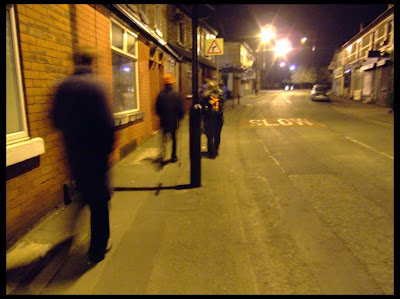Now we move from the interior to the exterior of the archive, from the fixed to the mobile, and from the static to the participatory. How is the archival function changing in a world of mobile devices and the ubiquitous mapping technologies some have dubbed “the spatial turn”? If, as William Gibson has suggested, cyberspace is everting—that is investing the physical world with its links, protocols, and data points—what are the paths for navigating to and from virtual and embodied space and back again? Finally, what are the implications of these technologies for the conduct and practice of the humanities? Do they point the way to a new, public, participatory humanities?
Presentation: Josh
READINGS
- Voss, Society of American Archivists 2012 Keynote (video above)
- Burdick, et al. “The Social Life of Digital Humanities” (D_H)
- Williams, “Disability, Universal Design, and the Digital Humanities” (DDH)
- Guldi, “What is the Spatial Turn?” (Read at least “Introduction,” “History,” and “Literature”)
- Farman, “Mapping the Digital Empire: Google Earth and the Process of Postmodern Cartography” (PDF)
- Inspect each of the following. The first two are projects, the last two are tools. How does cartographic visualization—as realized through Geographic Information Systems (GIS)—open up the space of the archive?
- Mapping the Republic of Letters (Case Studies and Tools)
- HyperCities
- Omeka
- NeatLine

Image: http://graffitijapan.blogspot.com/2010/07/first-graffiti-designer-qr-code.html
EXERCISE
This exercise asks you to create a “link” between an object or place in the physical world and the virtual space of the Web. It assumes you have access to a camera-equipped mobile phone or a digital camera. If you do not, please let me know and I will suggest an alternative. If you like, you may work in pairs.
Choose a spot you’re familiar with from your daily environment (it could be on campus, or where you live or where you work or someplace else). It should be a spot that has a story to tell. Maybe there’s a marker there of some sort, or a statue, or an inscription. Or some graffiti. Something, though, to indicate that others have found it a significant space in the past and acted to inscribe that significance.
 Once you’ve selected your spot, create a blog post (using the Exercises category) to document it. You should include an explanation of what the place is and why you chose it, pictures and/or video (keep files small, please), and a link to its location in Google Maps. Then: create a QR code* with a link to the blog post you just wrote. Print the QR code on label paper (you can also use regular paper and tape), return to the spot you started from, and affix the QR code in a way that’s visible (but non-intrusive). Test it (you will need a reader for your phone): does it work? Photograph the QR code in its site-specific locale, and add that photo to the blog post.
Once you’ve selected your spot, create a blog post (using the Exercises category) to document it. You should include an explanation of what the place is and why you chose it, pictures and/or video (keep files small, please), and a link to its location in Google Maps. Then: create a QR code* with a link to the blog post you just wrote. Print the QR code on label paper (you can also use regular paper and tape), return to the spot you started from, and affix the QR code in a way that’s visible (but non-intrusive). Test it (you will need a reader for your phone): does it work? Photograph the QR code in its site-specific locale, and add that photo to the blog post.
*There are many free services for creating QR codes. Feel free to use whichever you like.
Thanks to Jason Farman for assistance with this assignment.
